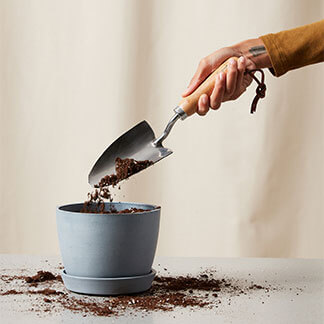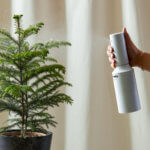Improper Light
Depending on the Palm, most need indirect to bright light. Bright indirect light can be found in places next to an east-facing window or a few feet back from an unobstructed southern or western window. If the southern or western window has something like a sheer curtain, natural shade from a tree or building outside, the plant can be placed a little closer. Bright light is when your plant gets at least 6+ hours of direct sun a day. You will find this kind of light in unobstructed southern or western windows. To learn more about indoor plant lighting, check out our lighting guide here! It’s always a good idea to double-check our care guides to see what lighting your specific palm needs.
If the area is too dark, growth will stop and leaves begin to yellow and die off since not enough light sustains photosynthesis, and the soil reminds moist leading to root issues. Rather than stop producing new leaf spears, the plant devotes all its energy and resources to the newest, youngest fronds, letting the lower and oldest leaves yellow.
Moisture
Most palms prefer to be watered when 50% of their soil volume is dry. Always check the soil before watering to make sure it needs it. Water thoroughly and discard any excess water from the saucer. If you water too often it can lead to yellowing and eventual root rot.
Pests
Weakened or stressed Palms become more susceptible to insect infestations. Sap-sucking bugs like spider mites can drain the Palm of moisture. This problem quickly manifests itself by yellowing leaflets and fronds. Scale, mealybugs, and spider mites occur frequently in indoor conditions. If not killed early on, these small pests proliferate and move all along frond parts into nooks and crannies. The piercing mouths of the insects drain the palm and accelerate yellowing, especially if the palm already is unhealthy from poor lighting, a nutrient deficiency or improper soil moisture.










